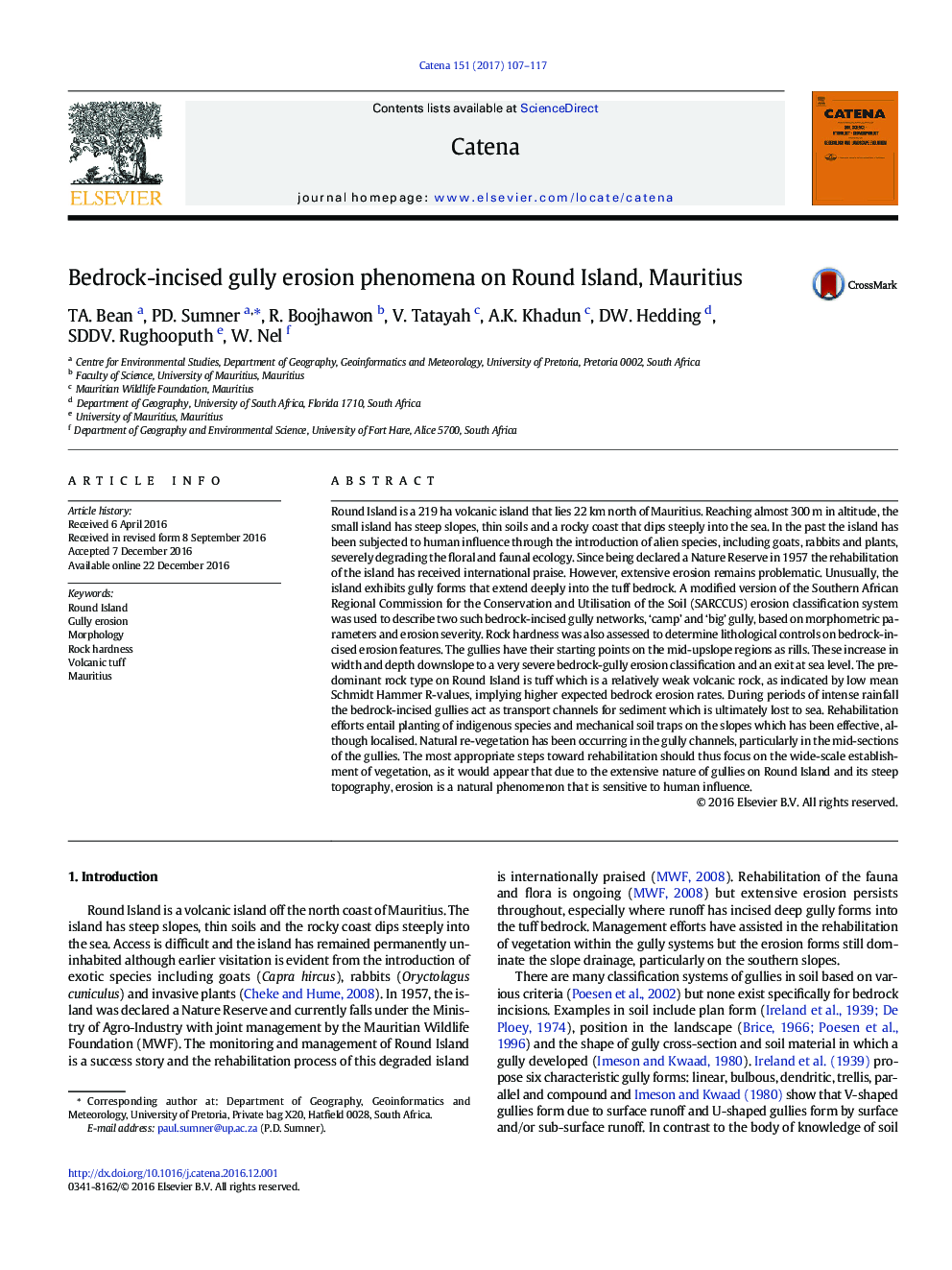| Article ID | Journal | Published Year | Pages | File Type |
|---|---|---|---|---|
| 5770177 | CATENA | 2017 | 11 Pages |
â¢Round Island is characterised by rill and gully incision into tuff bedrock.â¢Erosion forms are classified following a modified SARCCUS system.â¢Nick-points in the gullies promote overfalls and potholes where sediment collects.â¢Weak volcanic rock has low mean rock hardness supporting higher bedrock erosion rates.â¢Rehabilitation should focus on sediment control and establishment of vegetation.
Round Island is a 219Â ha volcanic island that lies 22Â km north of Mauritius. Reaching almost 300Â m in altitude, the small island has steep slopes, thin soils and a rocky coast that dips steeply into the sea. In the past the island has been subjected to human influence through the introduction of alien species, including goats, rabbits and plants, severely degrading the floral and faunal ecology. Since being declared a Nature Reserve in 1957 the rehabilitation of the island has received international praise. However, extensive erosion remains problematic. Unusually, the island exhibits gully forms that extend deeply into the tuff bedrock. A modified version of the Southern African Regional Commission for the Conservation and Utilisation of the Soil (SARCCUS) erosion classification system was used to describe two such bedrock-incised gully networks, 'camp' and 'big' gully, based on morphometric parameters and erosion severity. Rock hardness was also assessed to determine lithological controls on bedrock-incised erosion features. The gullies have their starting points on the mid-upslope regions as rills. These increase in width and depth downslope to a very severe bedrock-gully erosion classification and an exit at sea level. The predominant rock type on Round Island is tuff which is a relatively weak volcanic rock, as indicated by low mean Schmidt Hammer R-values, implying higher expected bedrock erosion rates. During periods of intense rainfall the bedrock-incised gullies act as transport channels for sediment which is ultimately lost to sea. Rehabilitation efforts entail planting of indigenous species and mechanical soil traps on the slopes which has been effective, although localised. Natural re-vegetation has been occurring in the gully channels, particularly in the mid-sections of the gullies. The most appropriate steps toward rehabilitation should thus focus on the wide-scale establishment of vegetation, as it would appear that due to the extensive nature of gullies on Round Island and its steep topography, erosion is a natural phenomenon that is sensitive to human influence.
